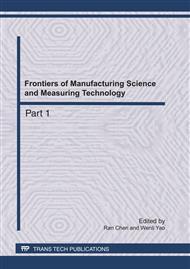[1]
Duan, K., Hu, X. Z., Wittmann, F. H. Size effect on fracture resistance and fracture energy of concrete [J]. Materials and Structures. 36: 74-80 (2003).
DOI: 10.1007/bf02479520
Google Scholar
[2]
Consoli, N. C., Schnaid, F., and Milititsky, J. Interpretation of plate load tests on residual soil site. J. Geotech. Geoenviron. Eng., 124(9), 857–867 (1998).
DOI: 10.1061/(asce)1090-0241(1998)124:9(857)
Google Scholar
[3]
Jardine, R. J., Potts, D. M., Fourie, A. B., and Burland, J. B. Studies of the influence of non-linear stress-strain characteristics in soil-structure. Geotechnique, 36(3), 377-396 (1986).
DOI: 10.1680/geot.1986.36.3.377
Google Scholar
[4]
Vaughan, P. R. Characterizing the mechanical properties of in situ residual soil. Proc. of2nd Int. Con! on Tropical Soils, Singapore, 2, 469-487 (1990).
Google Scholar
[5]
Burland, J. B. Ninth Laurits Bjerrum Memorial Lecture: Small is beautiful. The stiffness of soils at small strains. Can. Geotech. J., Ottawa, 26(4), 499–516(1989).
DOI: 10.1139/t89-064
Google Scholar
[6]
Ghionna, V. N., Manassero, M., and Peisino, V. Settlement of large shallow foundations on partially cemented gravely sand depositusing PLT data. Deformation of soils and displacements of structures. Proc., 10th Eur. Conf. Soil Mech. Found. Engrg., Vol. 1, Balkema, Rotterdam, The Netherlands, 1417–1422 (1991).
Google Scholar
[7]
Maher, M. H., and Gray, D. H. Static response of sands reinforced with randomly distributed fibers. J. Geotech. Eng., 116 (11) 1661–1677 (1990).
DOI: 10.1061/(asce)0733-9410(1990)116:11(1661)
Google Scholar
[8]
Kogler, F. Discussion of "Research in Soil Engineering (Foundations). Tram, ASCE, 98, 299-301 (1993).
Google Scholar
[9]
Reznik, Y. M. Discussion of "Determination of collapse potential of soils, by A. J. Luttenegger and R. T. Saber. Geotech. Test, I., 12(3), 248 (1989).
DOI: 10.1520/gtj10977j
Google Scholar
[10]
Kusakabe, O., Maeda, Y., and Ohuchi, M. Large-scale loading tests of shallow footings in pneumatic caisson. J. Geotech. Engrg., ASCE, 118(11), 1681–1695 (1992).
DOI: 10.1061/(asce)0733-9410(1992)118:11(1681)
Google Scholar
[11]
Maeda, K., and Miura, K. Confining stress dependency of mechanical properties of sands. Soils and Found., Tokyo, 39(1), 53–67(1999).
DOI: 10.3208/sandf.39.53
Google Scholar
[12]
Shiraishi, S. Variation in bearing capacity factors of dense sand assessed by model loading tests. Soils and Found., Tokyo, 30(1), 17–26 (1990).
DOI: 10.3208/sandf1972.30.17
Google Scholar
[13]
Ueno, K., Miura, K., and Maeda, Y. Prediction of ultimate bearing capacity of surface footings with regard to size effect. Soils and Found., Tokyo, 38(3), 165–178 (1998).
DOI: 10.3208/sandf.38.3_165
Google Scholar


